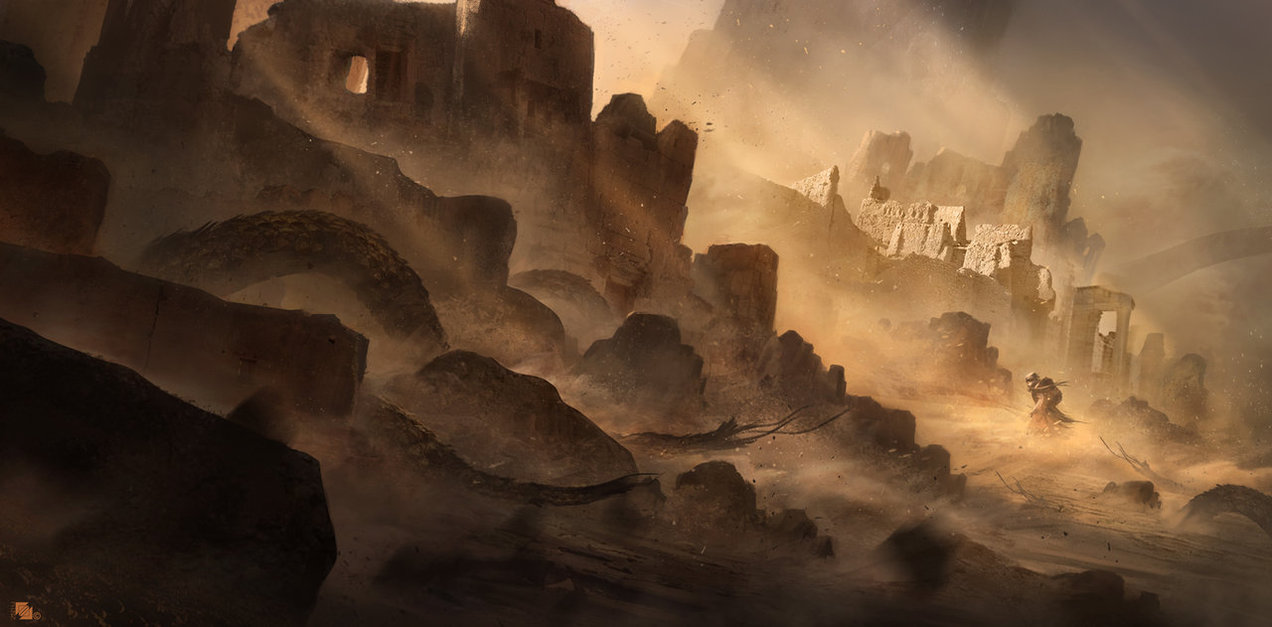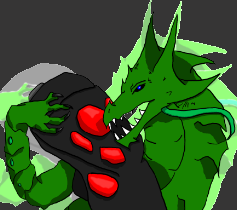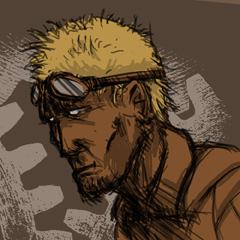Mulrakh
Lost now to the sands of time, but for passages in the oldest of history books, is the truth of Mulrakh before empire. In those days, the Working had been finished, and the centhiri as we are today were born: a single people in two forms under the banner of one king. But greed and ambition do as they always do and corrupt even the most upstanding of ideals, a corrosive influence that we must maintain constant vigilance against lest we repeat the misdeeds of our ancestors, the horrors we afflicted against those not of our blood, and against one another. In days long gone, Mulrakh was a protector, a haven of safety in a world ruled by the harrowing storm. In Mulrakh alone was there knowledge to be found that would ward away the churning sands and the howlings gales. Through Mulrakh alone did life survive in the Pāll-tanír. But its kings wanted more. They thought that their protection entitled them to more things than they deserved, and as the rest of the continent balked at their requests, they became resentful and resorted to force, enslaving those who stood against them, and then, when they had amassed enough power, anyone that wasn't them. I invoke the name of Mulrakh not to remember the tyrants that spurred its decline, but to remember the nobles whose blood, sweat, and tears pushed our people into the light. I invoke the name of Mulrakh not to bring worship to the twin-headed deceiver, Kyst'Teth, who divided our people but to honour the legacy of our forefathers, alossi and tussari working together to create a better world. I invoke the name of Mulrakh not to shower it with accolades or praise the tyranny that it wrought; instead, I invoke the name of Mulrakh as a reminder of what we must work to avoid as we seize the unity that we were denied so long ago. I invoke the name of Mulrakh not because we should aspire to empire, but because despite the stain on its name, it is our legacy.The ancient empire of Mulrakh was built by the centhiri following the Working and the subsequent Stormbreaker War that saw to the decline of the Brass Dragon Civilization, allowing the centhiri to become the undisputed masters of the desert continent. Positioning themselves as stewards and protectors following the war, ancient Mulrakh rose to prominence by wielding protective storm magic to protect themselves as well as their closest allies from the arventir that constantly swept across the land. Following a brief golden age, however, a series of weak rulers and political upheaval led to the establishment of a new order that placed the priestly class of centhiri society at the top of the empire. Though initially beneficial, this arrangement quickly devolved as each new king positioned themselves as a god, personally ordained by Kyst'Teth and anointed with the authority to make unilateral decisions on the behalf of Mulrakh.
The Working
Main Article: The Working One of the most important aspects of the Mulrakhan identity, though moreso in the latter years of the empire rather than at the onset, was the act of magic known only as "the Working." The rites and rituals involved have long been forgotten, but the results are unquestionable. According to the few surviving texts from the time of the Working, rediscovered only recently as a result of expeditions into ancient Mulrakhan ruins, prior to this unprecedented act of magic, the centhiri were similar in form to the other mortal races save, perhaps, the a'drekh. There is no extant description of the centhiri before the Working, but it is known that only after the Working did they begin to take on their reptilian characteristics. It is believed that the Working itself was achieved through an amalgamation of arcane and blood magics, altering not only the outside appearance of the centhiri, but their very bloodlines, essentially crafting an entirely new race in the aftermath. As far as the designers of the Working were concerned, however, the spell was a failure. Badly-damaged journals believed to be contemporary tot he event say as much. The objective was to create beings with a humanoid upper body and a serpentine lower body, the typical physiology of the tussari centhiri. However, success was limited, as a significant minority of centhiri population maintained a humanoid form, instead appearing as bipedal lizards, in essence. The incompleteness of the Working would serve as the justification for much tragedy in the later empire.Structure
During the time of its god-kings, the Mulrakhan empire instituted a very strict caste system that assigned individuals to certain strata of society largely based on their outer appearance, primarily focusing on the features that were either granted or not by the Working. It was during this time that the distinction between the alossi centhiri and the tussari centhiri was first formalized and used as a basis for discrimination.
Alossi Centhiri
Main Article: Alossi Centhiri Literally meaning "incomplete centhiri," in High Centhiri, the alossi centhiri were the members of the centhiri race that did not experience a complete transformation through the Working. Instead, they are caught in-between the original human-esque physiology of the pre-Working centhiri and the more serpentine bodies of the tussari. The term alossi centhiri was coined during the reign of the god-kings as a way to consolidate power by elevating the tussari to a "natural" position of superiority. The fact that the alossi were not transformed in the same way as the tussari was used as justification for their relegation to second-class citizenship. Although, compared to the slave caste, which was comprised, primarily, of the subjugated races of the Pāll-tanír they still maintained some semblance of rights. The alossi themselves did not have much of a social hierarchy within their ranks and the tussari never saw a need to further segregate them. But in the social hierarchy of the greater empire around them, the alossi occupied what was arguably the lowest rung, as at least they were considered persons instead of property like the slaves underneath them. While the slaves bore the bulk of the menial labour required by the empire, the rest fell on the shoulders of the alossi, further highlighting their status as only slightly better-off than the slaves. However, the most successful and the resourceful among the alossi could enjoy a better life, becoming merchants and landowners in their own right. But they were disadvantaged in comparison to their tussari counterparts, always having to play by different, more stringent rules. Not even success, in any sense of the word even in terms of wealth, did not grant the alossi centhiri immunity from slavery as a punishment for failing to abide by the strictures enforced upon them by the empire.Tussari Centhiri
Main Article: Tussari Centhiri Coined during the time of the god-kings, the term tussari centhiri literally translates to "ascended centhiri." The phrase pertains to the portion of centhiri society that underwent the intended transformation through the Working, having been granted serpentine lower bodies and reptilian upper bodies in a humanoid configuration. They were viewed as fortunate and privileged in the early empire but were not celebrated as "superior" until the time of the god-kings where they were treated as such in order to legitimize the theocratic nature of Mulrakhan government at the time. Although the alossi were considered a single homogenous social class, the tussari were further divided into a number of castes.Rhaas
The Rhaas were the lowest and most numerous of the tussari. They retained humanoid faces, instead of the serpentine heads of upper castes, and as such were considered to be tussari by the bare minimum. They formed the mercantile and entrepreneurial class of Mulrakh, competing with one another in the sale of goods and services. A select few were land owners who allowed alossi to manage their properties, selling the produce for a profit.Ssakha
Taken from the word ssakha meaning "arrow" in High Centhiri, the Ssakha were considered the "lower" nobility of the tussari. Their defining feature is the fact that their heads resemble the heads of snakes rather than the heads of humans, hence the use of the vernacular "arrowhead" to refer to them. This caste was comprised of lesser lords and ladies, particularly wealthy merchants, the vassals of greater house, as well as the centhiri equivalent to knights.Ssaara
Taken from the High Centhiri word ssara meaning "cowl" or "hood," the Ssaara appear as hooded serpents akin to cobras. The Ssaara formed the proper nobility of the empire, being comprised of the lords and ladies of the court as well as the wealthiest of Mulrakhan aristocrats. The centhiri considered the Ssaara as one of the two pillars of the empire, representing the military, political, and economic power that Mulrakh had at its fingertips.Ventssar
Originally considered an anomaly in the Working, the Ventssar insinuated themselves into centhiri society following the rise of worship in the twin-headed feathered serpent Kyst'Teth. Bearing feathers, they naturally assumed positions as messengers of the gods, forming, during the time of the god-kings, the priestly class of the centhiri. Colloquially, they were known as the Stormcallers as nearly all of the Ventssar had an innate talent for the storm magics that formed the cornerstone of centhiri society. The Ventssar were the other pillar of the empire, representing the will and favour of the gods that empowered the god-kings to take their thrones. As far as rank in the social hierarchy, Ventssar are considered on par with the Ssaara.Ventssaarasar
The most distinguished of the tussari, the god-kings of the empire all belonged to this caste. Ventssar born from the Ssaara, they were seen as the unification of the two pillars of Mulrakh. Feathered serpents with cowls, their very appearance was considered a mark of divinity, an unearthly quality that separated them from the rest of the mere mortals that surrounded them. Considered demigods or quasi-deities in their own right, the Ventssaarasar were a political entity unto their own. The brotherhood between the members of this lofty caste was considered far stronger and more lasting than any bonds they could have with centhiri who are different from them. Thus they are said to belong to no house but the god-king's, and have a reputation for doing absolutely everything necessary to protect one another, and to protect their emperor.Weather the Tempest
Type
Geopolitical, Empire
Demonym
Mulrakhan
Government System
Monarchy, Theocratic
Power Structure
Unitary state
Economic System
Command/Planned economy





I love the detail on the different castes as well as the history behind it. I am curious as to why the built the Working in the first place. Was this because of a serpent deity or something else?
Well, it's a bit of a secret, but it has a lot to do with the Brass Dragon Civilization and was basically the equivalent of the gift that you buy and think that the person you look up to/value a lot would really like but they end up being really horrified of. Yeah, that's what the Working was. They thought the dragons would be glad that they patterned their entire race (kinda) off of the dragons, but the dragons were horrified and bad blood started to brew and one thing led to another, you know, one moment the gift you worked really hard for is rejected and the next you're declaring war on the people that taught you everything you know.
Ah, that sounds about right. I don't think the dragons would appreciate that either. Great job on it.